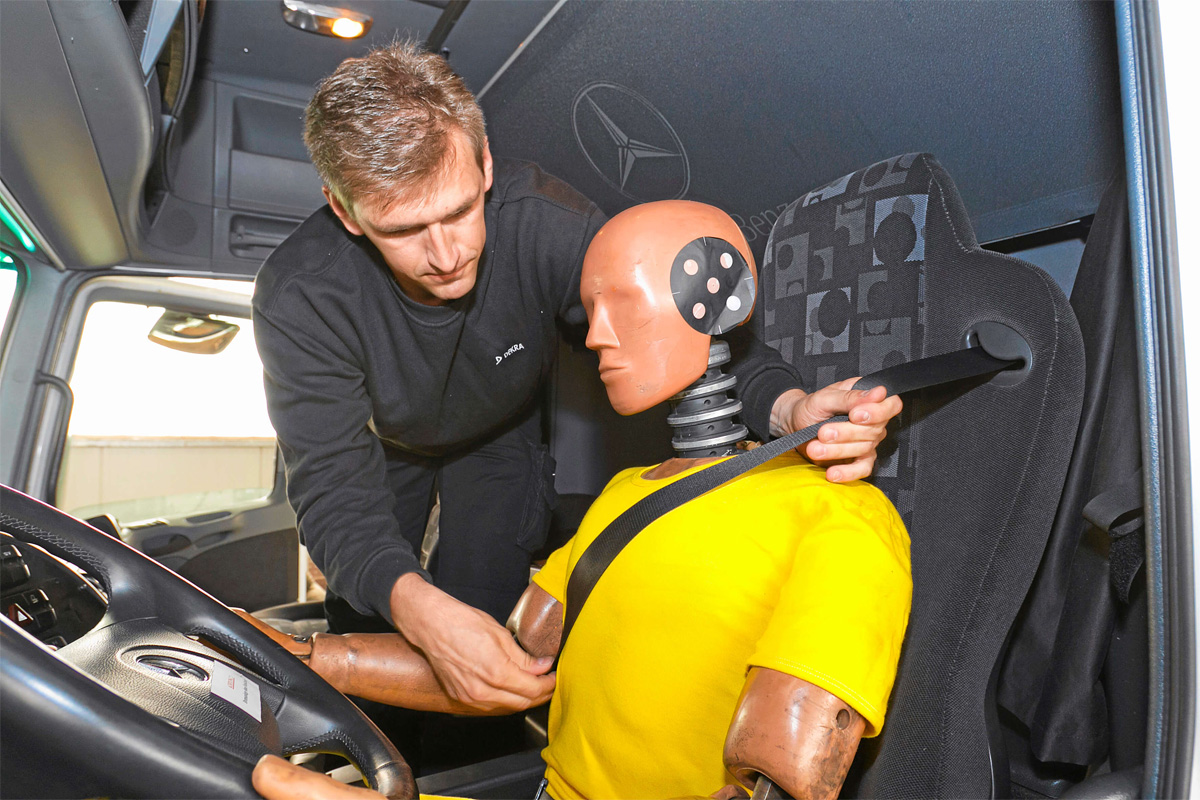
Too many people in Europe are still traveling in commercial vehicles without wearing a seatbelt. This is the finding of a recent road users’ survey by DEKRA Accident Research. Out of almost 17,000 people surveyed in Germany, France, the Czech Republic, and Denmark, only around 14,000 were wearing seat belts. This equates to an average rate across all four countries of just 83%. “Despite the ongoing development in active safety systems, the seat belt is still the number one lifesaver one the road. It is completely incomprehensible that today almost one in five commercial vehicle occupants is still not wearing a seat belt,” said Jann Fehlauer, managing director of DEKRA Automobil GmbH, during the presentation of the results at the IAA Transportation trade fair in Hanover.

In the four countries, the N1 (under 3.5 metric tons gross vehicle weight), N2 (3.5 to 12 metric tons), and N3 (over 12 metric tons) vehicle classes were evaluated, each at different locations – in built-up areas, non-built-up areas, and on freeways. The DEKRA Accident Research observation team was out on the road between April and July 2022.
The overall seat belt use rate was lowest in the Czech Republic (77%) and highest in France (87%), with Germany (82%) and Denmark (83%) falling in between.
In all countries, the seat belt use rate was highest in the van class (N1). The majority of those not wearing seat belts were in light trucks (N2) in the Czech Republic and France, and in heavy trucks (N3) in Germany and Denmark:

Overall, across all countries and vehicle classes, the seat belt was worn more frequently by those in the driver’s seat than by front-seat passengers.
The figures from Germany can be compared with earlier DEKRA Accident Research studies from 2004 to 2014. There has been a significant increase over the years in some areas. This applies to all vehicle classes, albeit to varying degrees; initial figures were very low for heavy trucks (N3) in particular in 2004.
Particularly striking, for example, is the increase in class N3 in built-up areas, from around 21% in 2004 and 49% in 2014 to 73% currently. Likewise, in class N3 on the freeway, the rate rose from 16% in 2004 to 66% in 2014 to 82% today.
“Overall, the trend is moving in the right direction; nevertheless, the figures that our colleagues have come up with in 2022 are still as worrying as they are ultimately unacceptable,” Fehlauer added. Various studies estimate that of all unbelted truck occupants killed on the road, between 40 and 50% could have survived if they had been wearing their seat belts correctly. “An improvement will be difficult to achieve without tangible penalties and proper monitoring. But most of all, a great deal of education and persuasion is still necessary. DEKRA will continue to work hard to make this happen,” Fehlauer said.